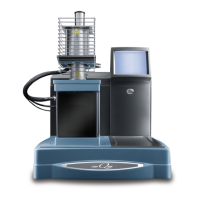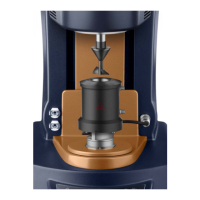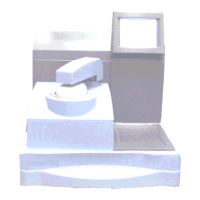Appendix B
B–30 TA I
NSTRUMENTS
TGA 2950
These samples form bubbles which can rise up
and touch the end of the thermocouple, ruining
the experiment and possibly contaminating the
thermocouple. Just as the largest chewing gum
bubbles are produced by blowing slow pro-
longed breaths, the largest gas bubbles form in
samples which are gradually heated. For this
reason bubble formation is more of a concern for
Hi-Res
TM
than conventional TGA.
Another effect of bubble formation is a sudden
small unexpected change in weight and accom-
panying spike in the percent/minute curve as the
bubble bursts. An excellent example of bubble
noise can be seen in the scan of ethylene-vinyl
acetate in figures B.7 and B.8. In figure B.7 the
effect of bubble formation and bursting can be
seen as a sudden drop in weight at about 400
°
C
during the second weight loss. This appears in
the derivative curve as a peak shoulder. In
Figure B.8 we can clearly see the formation and
bursting of several large bubbles in the percent/
minute curve between 65 and 85 minutes into
the run. Again, these effects tend to be more
noticeable in Hi-Res
TM
TGA because larger
bubbles form due to the slow heating process.
The best solution to bubble noise is to decrease
resolution setting and/or increase maximum
heating rate. Reducing sample size may also
help.

